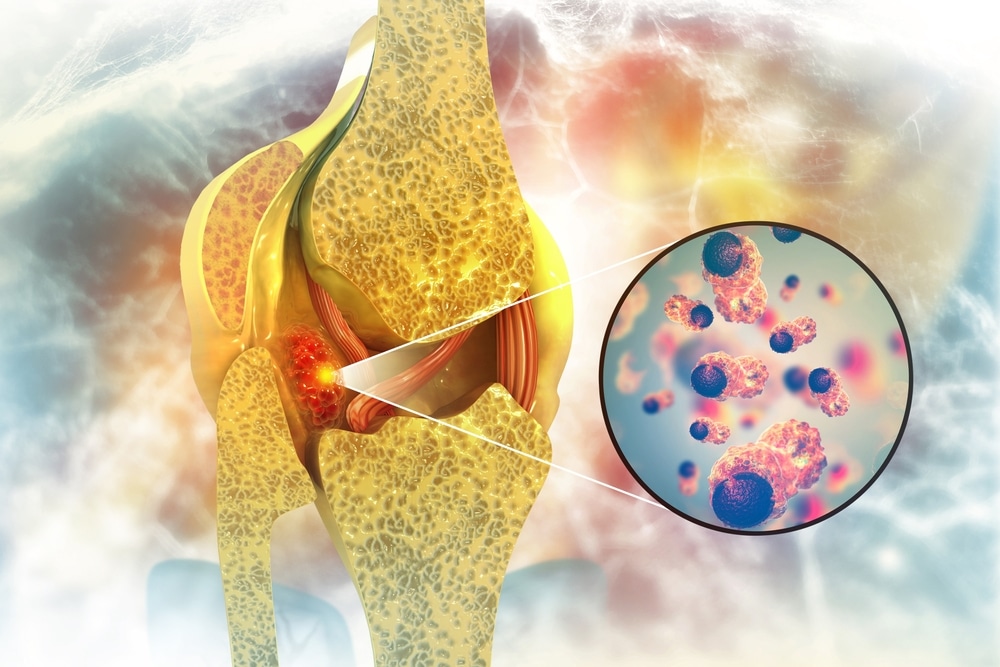Newsletter Signup - Under Article / In Page
"*" indicates required fields
Researchers at the University of East Anglia (UEA) in the U.K. have developed a new drug that works against all of the main types of primary bone cancer.
Cancer that starts in the bones, rather than cancer that has spread to the bones, predominantly affects children. Current treatments are grueling, with outdated chemotherapy cocktails and the potential for limb amputation. Despite all of this, the five-year survival rate is poor, at just 42%. This is largely because of how rapidly bone cancer spreads to the lungs.
But a new study shows how a new drug called CADD522 blocks a gene associated with driving the cancer’s spread, in mice implanted with human bone cancer.
The breakthrough drug increases survival rates by 50% without the need for surgery or chemotherapy. And, unlike chemotherapy, it doesn’t cause toxic side effects like hair loss, tiredness and sickness.
Lead researcher Darrell Green, from UEA’s Norwich Medical School, was inspired to study childhood bone cancer after his best friend died from the disease as a teenager. Now, the team has made what could be the most important drug discovery in the field for more than 45 years.
Inspired by a friend
Green said: “Primary bone cancer is a type of cancer that begins in the bones. It’s the third most common solid childhood cancer, after brain and kidney, with around 52,000 new cases every year worldwide.
“It can rapidly spread to other parts of the body, and this is the most problematic aspect of this type of cancer. Once the cancer has spread, it becomes very difficult to treat with curative intent.
“In high school, my best friend Ben Morley became ill with primary bone cancer. His illness inspired me to do something about it myself because during my studies I realized that this cancer has been all but left behind by others in terms of research and treatment progress. So I studied and went through university and obtained my PhD to eventually work in primary bone cancer.
“I wanted to understand the underlying biology of cancer spread so that we can intervene at the clinical level and develop new treatments so that patients won’t have to go through the things my friend Ben went through.
“Ultimately, we want to save lives and reduce the amount of disability caused by surgery. And now we have developed a new drug that potentially promises to do just that.”
Gene associated with cancer spread
The team collected bone and tumor samples from 19 patients at the Royal Orthopaedic Hospital in Birmingham. However, this small number was more than enough to detect some obvious changes in the cancers.
The team used next generation sequencing to identify types of genetic regulators called small RNAs that were different during the course of bone cancer progression.
They also showed that a gene called RUNX2 is activated in primary bone cancer and that this gene is associated with driving the cancer’s spread.
The new bone cancer drug is effective in all of the main bone cancer subtypes
They went on to develop CADD522, a small molecule which blocks the RUNX2 protein from having an effect, and tested it in mice.
Green said: “In preclinical trials, metastasis-free survival was increased by 50% using the new CADD522 drug on its own, without chemotherapy or surgery. I’m optimistic that combined with other treatments such as surgery, this survival figure would be increased further.
“Importantly, because the RUNX2 gene is not usually required by normal cells, the drug doesn’t cause side effects like chemotherapy.
“This breakthrough is really important because bone cancer treatment hasn’t changed for more than 45 years. The new drug that we have developed is effective in all of the main bone cancer subtypes, and so far, our experiments show that it is not toxic to the rest of the body. This means that it would be a much kinder treatment for children with bone cancer, compared to the grueling chemotherapy and life changing limb amputation that patients receive today.
“We hope it will save a lot of lives.”
The drug is now undergoing formal toxicology assessment before the team assembles all of the data and approaches the MHRA for approval to start a human clinical trial.
The research was led by UEA in collaboration with The University of Sheffield, Newcastle University, the Royal Orthopaedic Hospital, Birmingham, and the Norfolk and Norwich University Hospital.
‘YBX1-interacting small RNAs and RUNX2 can be blocked in primary bone cancer using CADD522’ is published in the Journal of Bone Oncology.
Oncology R&D trends and breakthrough innovations







